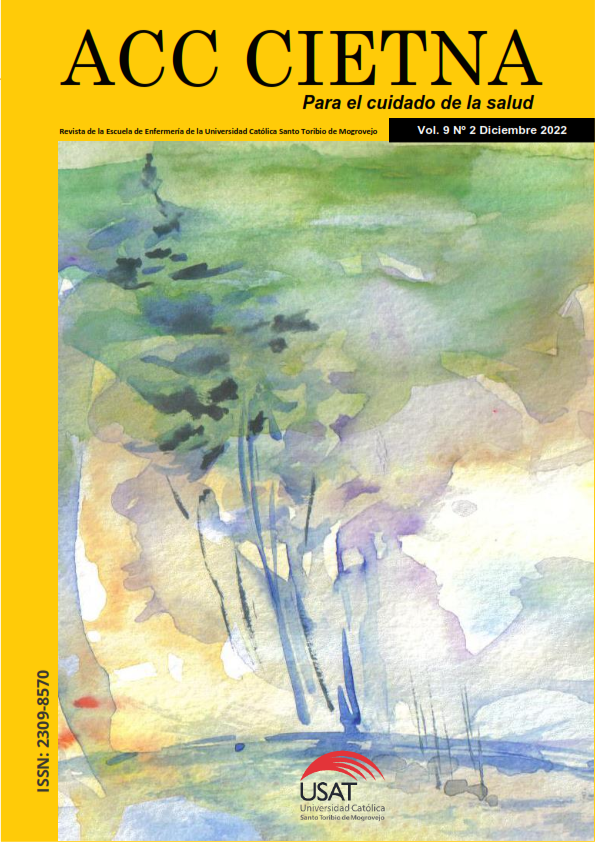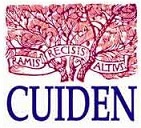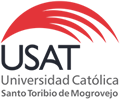Level of maternal self-efficacy in Adolescents from the northeast region of Guanajuato, México
Abstract
Objective: Describe and analyze the level of Maternal Self-efficacy in adolescents from a second level hospital in the state of Guanajuato, in Mexico. Method: It was applied to adolescent mothers who attended a Maternity Hospital in the state of Guanajuato, the Perceived Maternal Parental Self-efficacy scale (α=0.98) was used, which consists of 20 Likert-type items and four subscales, as well as an identification card semi-structured for sociodemographic data, the latter, validated by experts. Ethical considerations were taken into account. Main Results: 72.7% of adolescent mothers presented a low level of self-efficacy, characterized by lack of ability and little experience in maternal care. Overall Conclusion: Maternal self-efficacy in adolescents is low, given the characteristics of development at this stage, coupled with motherhood, some mothers face the birth of a premature child, who in most cases ends up being hospitalized, having repercussions once More on self-efficacy. For nursing, adolescent mothers present a challenge for care, therefore, the need to describe this phenomenon is identified in order to create educational interventions based on maternal self-efficacy in adolescents.
Downloads
References
FARKAS-K, C. Escala de evaluación parental (EEP): desarrollo, propiedades psicométricas y aplicaciones. Univ. Psychol. [online]. 2008 [citado 2021-11-10]. 7(2): 457-467. Disponible en: http://pepsic.bvsalud.org/scielo.php?script=sci_arttext&pid=S1657-92672008000200012&lng=pt&nrm=iso. ISSN 1657-9267
Paine AL, Cannings-John R, Channon S, Lugg-Widger F, Waters CS, Robling M. Assessing the impact of a family nurse-led intervention on young mothers’ references to internal states. Infant Ment Heal J. 2020 [Acceso 2021-10-18]; 41: 463. Disponible en: https://pubmed.ncbi.nlm.nih.gov/32045025/
Kristoffersen L, Støen R, Rygh H, Sognnaes M, Follestad T, Mohn HS, et al. Early skin-to-skin contact or incubator for very preterm infants: study protocol for a randomized controlled trial. [Acceso 10 Jul 2020]. Disponible en: https://pubmed.ncbi.nlm.nih.gov/27955652/
Carter BS, Willis T, Knackstedt A. Neonatal family-centered care in a pandemic. J Perinatol [Internet]. 2021 Feb 19 [cited 2021 Mar 7]. Disponible en: http://www.ncbi.nlm.nih.gov/pubmed/33608627
Figueras J, Esqué MT, Arroyo L, Bella J, Álvarez R, Carbonell X. Evolución de la atención a domicilio para niños prematuros y de bajo peso de nacimiento desde 2002 hasta 2014. An Pediatr [Internet]. 2016 Sep 1 [cited 2021 Jun 28]; 85(3): 134–41. Disponible en: https://www.analesdepediatria.org/es-evolucion-atencion-domicilio-ninos-prematuros-articulo-S1695403316000321
Benzies KM, Aziz K, Shah V, Faris P, Isaranuwatchai W, Scotland J, et al. Effectiveness of Alberta Family Integrated Care on infant length of stay in level II neonatal intensive care units: a cluster randomized controlled trial. BMC Pediatr 2020 [Internet]. 2020 Nov 28 [cited 2021 Aug 9]; 20(1): 1–11. Disponible en: https://pubmed.ncbi.nlm.nih.gov/33246430/
Flacking R, Lehtonen L, Thomson G, Axelin A, Ahlqvist S, Moran VH, et al. Closeness and separation in neonatal intensive care. [Acceso 03 Oct 2020]. Disponible en: https://pubmed.ncbi.nlm.nih.gov/22812674/
Organización Mundial de la Salud. Nacimientos prematuros [Internet]. [cited 2021 Aug 6]. Disponible en: https://www.who.int/es/news-room/fact-sheets/detail/preterm-birth
Prematuridad y retos. Prevención y manejo. Fasciculo INP, CAV. [citado 2020-09-07]. Disponible en: https://www.pediatria.gob.mx/archivos/fasciculo_prematurez.pdf
Hernández M. Secretaría de Salud. Hospital Materno Celaya. Departamento de estadística. Febrero 12 2019.
Denise P, Chery Beck. Investigación en Enfermería. Fundamentos para el uso de la evidencia en la práctica de la Enfermería. 9ª Edición. 2018. 182-189. 2020 Nov 23.
Vargas-Porras C, Roa-Díaz ZM, Barnes C, Adamson-Macedo EN, Ferré-Grau C, De Molina-Fernández MI. Psychometric Properties of the Spanish Version of the Perceived Maternal Parenting Self-efficacy (PMP S-E) Tool for Primiparous Women. Matern Child Health J. 2020 May; 24(5): 537-545. [Internet]. 2021 Jul 16. Disponible en: https://doi.org/10.1007/s10995-019-02860-y
Sampieri R, Fernández C. Baptista P. Metodología de la Investigación. 6ª Edición. Mc Graw Hill Education. 264-299. 2021 Jul 23.
World Medical Association. Declaración de Helsinki de la AMM - Principios éticos para las investigaciones médicas en seres humanos. 2018 [citado 20 Jun 2019]. Disponible en: http://www.wma.net/es/30publications/10policies/b3/
Secretaría de Salud. Reglamento de la ley general de salud en materia e investigación para la salud. 1984. [citado 20 Jun 2019]. Disponible en: http://www.salud.gob.mx/unidades/cdi/nom/compi/rlgsmis.html
Hinton P., Neuman B. Blueprint for Use of Nursing Models: Education, Research, Practice & Administration. Ed: NLN Press. EE.UU. 1996. [Internet]. 2021 May 08. Disponible: https://iucat.iu.edu/iue/1275036
Villasís KMA. Actualización de las causas de mortalidad perinatal: la OMS publicó en 2016 el ICE-PM. Rev Mex Pediatr. 2016; 83(4): 105-107. [citado 04 May 2020]. Disponible: https://www.medigraphic.com/cgi-bin/new/resumen.cgi?IDARTICULO=68234
Kikuchi K, Ansah EK, Okawa S, Enuameh Y, Yasuoka J, Nanishi K et al. Effective linkages of continuum of care for improving neonatal, perinatal, and maternal mortality: a systematic review and meta-analysis. PLoS One. 2015; 10(9): e0139288. [citado 2021-05-21], disponible: https://journals.plos.org/plosone/article?id=10.1371/journal.pone.0139288
García C, & Risco de Bocanegra, D. D. Conocimiento y prácticas maternas sobre alimentación complementaria en un centro de salud de Lambayeque, Perú 2021. ACC CIETNA: Revista De La Escuela De Enfermería [Internet]. 2022 [citado 2021 Jun 10]; 9(1): 120 - 134. Disponible en: https://doi.org/10.35383/cietna.v9i1.744
Leahy-Warren P. Maternal parental self-efficacy in the postpartum period. Midwifery 27 (2011) 802-810. [citado 14 agosto 2021]. Disponible: https://pubmed.ncbi.nlm.nih.gov/20888092/
Peña-Silva B, Miranda-Iglesias M, Caviedes-Fernández J, Ulloa-Ramírez V, Rementería-Rementería Y, et al.Estrés parental y sus dimensiones en Unidades de Cuidado Intensivo Neonatal –Pediátrica: Revisión Narrativa. Acc Cietna: para el cuidado de la salud [Internet]. 2021; 8(2): 67-84. Disponible en: https://doi.org/10.35383/cietna.v8i2.611
Leahy-Warren P, McCarthy G, Corcoran P, First-time mothers: social support, maternal parental self-efficacy and postnatal depression. [cited 2022 Aug 11]; Disponible en: https://www.academia.edu/12310119/First_time_mothers_social_support_maternal_parental_self_efficacy_and_postnatal_depression
Muñoz R, Rodríguez M, Autoeficacia de la lactancia Materna en mujeres primíparas de Madrid. [cited 2022 Dic 20]; Disponible en: http://www.scielo.edu.uy/pdf/ech/v6n1/2393-660
Ascunce G, Ruíz Z. Explorando el papel de la autoeficacia parental en el uso de los servicios sanitarios: revisión de la literatura. [citado 21 Mar 2021]. Disponible en: https://docs.bvsalud.org/biblioref/2021/05/1223569/254-270.pdf
Peña B., García A., Miranda M., Caviedes J., Ulloa V., & Rementería Y. Estrés parental y sus dimensiones en Unidades de Cuidado Intensivo Neonatal – Pediátrica: Revisión Narrativa. ACC CIETNA: Revista De La Escuela De Enfermería, 8(2), 67-84. https://doi.org/10.35383/cietna.v8i2.611
Los autores conservan los derechos de autor.
Esta obra está bajo una licencia internacional Creative Commons Attribution 4.0.
Los artículos publicados por la revista científica "Acc Cietna: para el cuidado de la salud" de la Escuela de Enfermería de la Universidad Católica Santo Toribio de Mogrovejo, Chiclayo, Perú están sujetos a una licencia internacional Creative Commons Attribution CC BY 4.0.




















 BIBLIOTECA USAT
BIBLIOTECA USAT